
Beijing, China - The Summer Palace cover page. |

Map of China with the star indicating Beijing. |
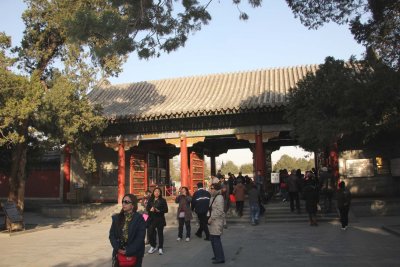
View of the East Palace Gate, the main entrance of Summer Palace in Beijing. |
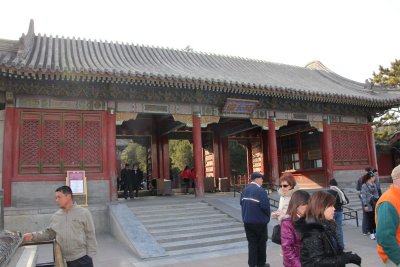
The Summer Palace, the largest imperial garden in the world, was used as a temporary palace by the royal family. |
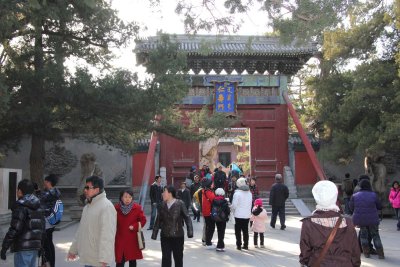
The Summer Palace was built in 1750, but was burned down by Anglo-French forces in 1860. It was rebuilt in 1888. |
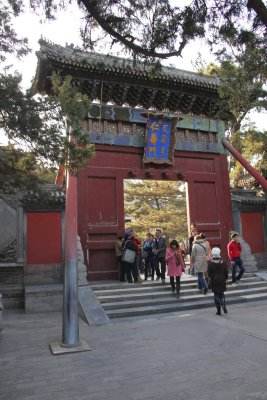
Interior passageway in the Summer Palace. |

Male bronze lion guarding the Gate of Dispelling Clouds at the Summer Palace. |
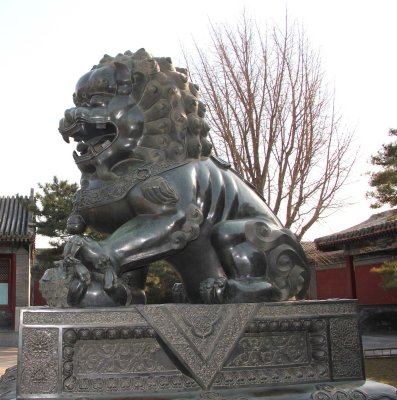
Close-up of guardian lion. It is a male lion because his paw rests on a ball. |
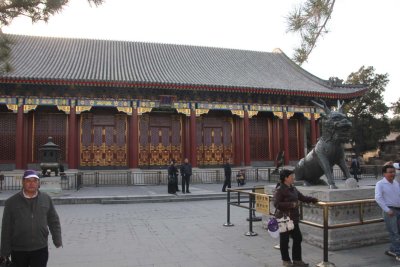
The Hall of Benevolence and Longevity with a bronze Qilin statue in front. |

A Qilin is a mythical hooved Chinese chimerical creature, which is an omen of "rui" (serenity or prosperity). |
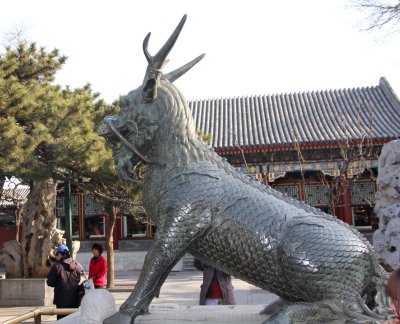
The Qilin is often depicted with fire all over its body. Westerners often mistakenly call it a “Chinese unicorn.” |

An unhappy Chinese boy at the Summer Palace. |

Another side of the Hall of Benevolence and Longevity. It is where foreign ministers were met by the emperor and empress. |
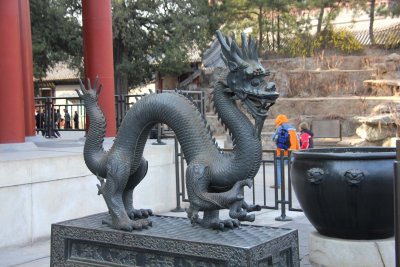
Bronze dragon sculpture in front of the Hall of Benevolence and Longevity. |
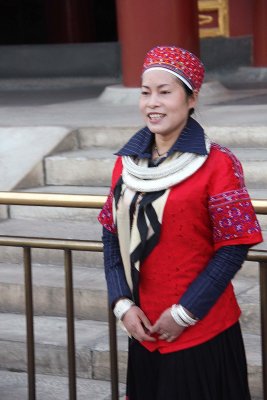
This beautiful Chinese woman outside of the hall looked like a model. |
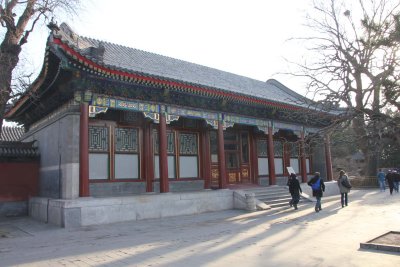
Beside the Hall of Benevolence and Longevity, was this smaller pavilion. |
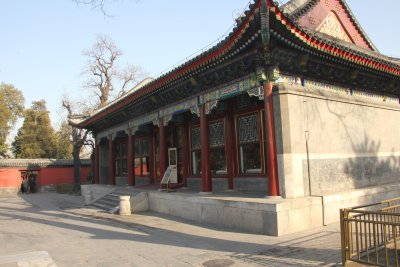
Side view of the smaller pavilion. |
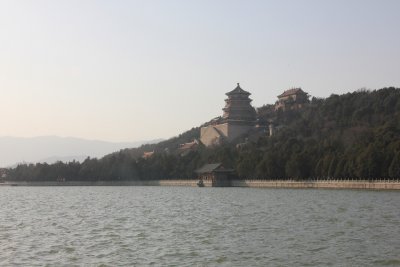
Tower of the Fragrance of the Buddha on Wanshou Shan (Longevity Hill) overlooking Kunming Lake. |
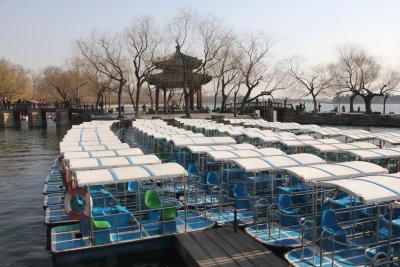
Small tourist boats docked at Kunming Lake. They were not in service yet, since it was March. |
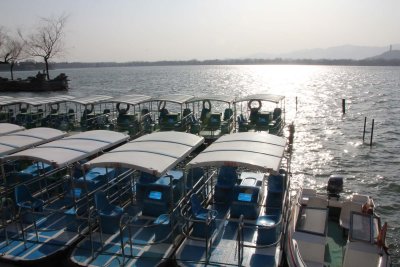
Inert boats with the mid-afternoon sun shimmering on the water. |
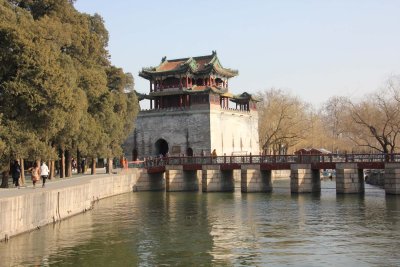
The Culture Pavilion with the red Seventeen-Arch Bridge on Kunming Lake at the Summer Palace. |

At the end of the bridge is the Knowing Spring Pavilion on the lake. |

Empress Dowager Cixi dined here on rainy days, to stay dry and to gaze upon the distant hills. |

It is a great place to watch the winter ice thaw. Then you "know it is spring" at the Knowing Spring Pavilion. |
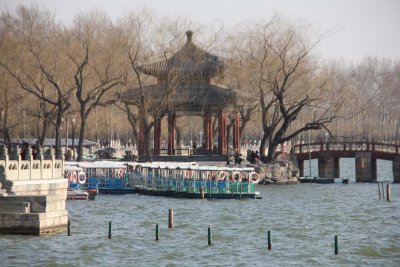
Tourist boats with the Knowing Spring Pavilion in the background. |

Pathway along Kunming Lake with an impressive stone wall with decorative posts. |
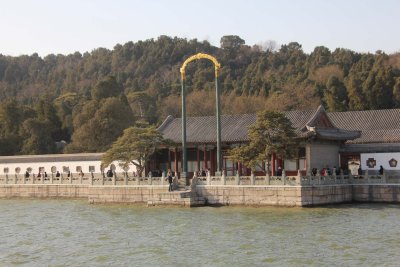
The pathway leads to more royal buildings. |

Tourists were flocking along the pathway. |
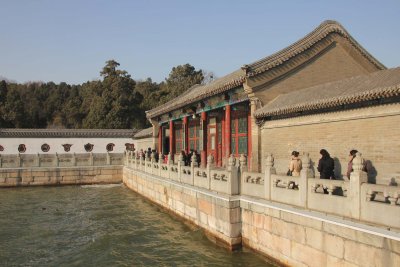
With an area of 2.2 square kilometers, Kunming Lake covers approximately three quarters of the Summer Palace grounds. |
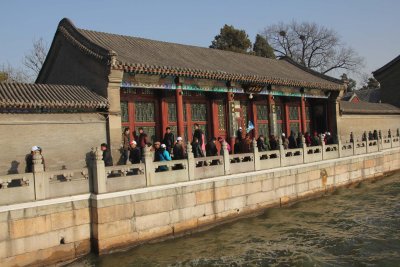
Looking back at the many tourists behind me on the pathway. |
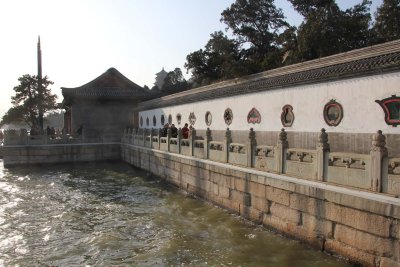
Unusual windows in front of a wall of the imperial garden adjacent to Kunming Lake. |
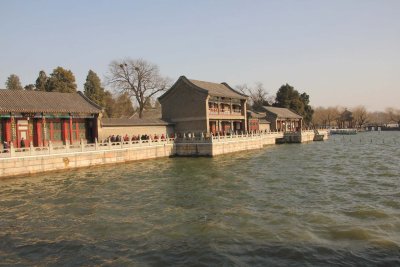
View behind me of the lake with more royal buildings. |
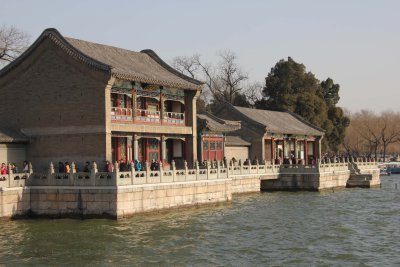
Close-up of one of the buildings. |
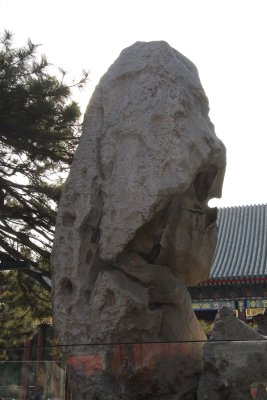
Stone of the God of Longevity was brought from the Morgan Garden in 1886 when the Summer Palace was being rebuilt. |
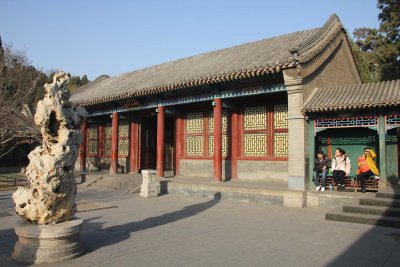
View of the Hall of Happiness and Longevity, which was Empress Dowager Cixi’s residence. |
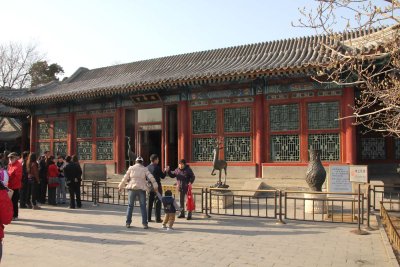
After it was rebuilt in 1889, she lived there from May to October every year until her death in 1908. |
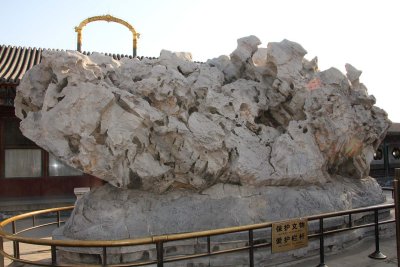
The Blue Iris Stone called the "Stone of the Wastrel." Emperor Qianlong (Qing Dynasty) moved it to the garden at great expense. |
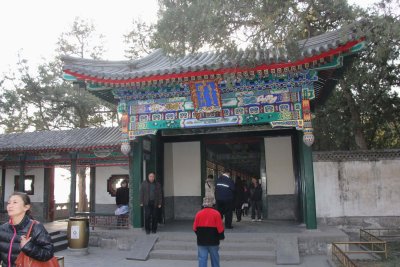
Colorful gate to a the imperial garden and to a 728-meter long corridor alongside it. |
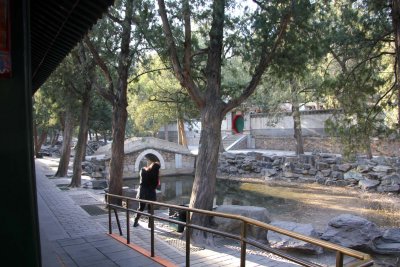
View as I exited the gate. |
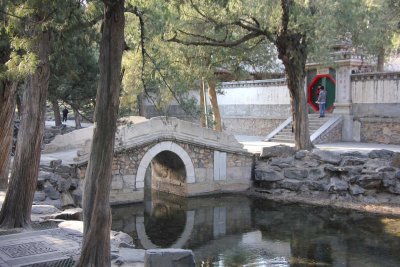
There, I saw a pond, a bridge and landscaping of the imperial garden. |

The 728-meter long corridor was designed to connect parts of the garden. The interior of it is beautifully carved and painted. |

Exquisite ceiling decorations inside the corridor. |
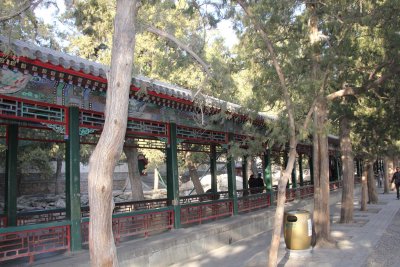
View of the corridor from the lakeside. |
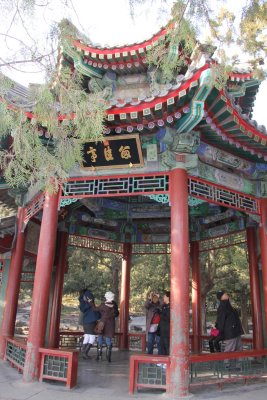
One of many colorful corridor exits that connect to the royal garden. |
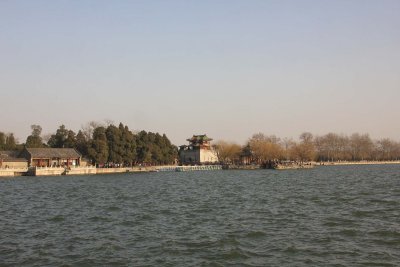
Another lakeside view that I saw after I exited from the corridor. |
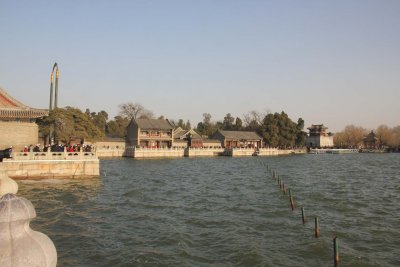
As I headed back, I could see how the pathway winds along Kunming Lake. |
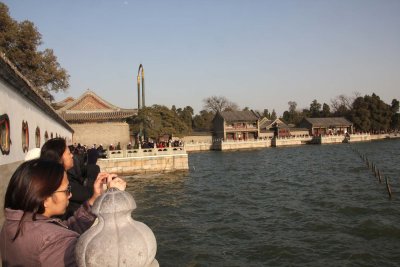
Some of the many tourist at the Summer Palace snapping pictures. |
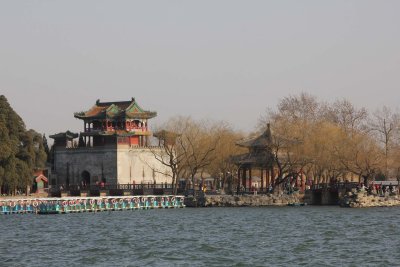
View of the tourist boats near the Culture Pavilion, the Seventeen-Arch Bridge and the Knowing Spring Pavilion. |
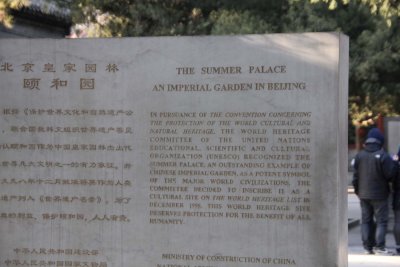
Sign that I saw when I exited the Summer Palace saying it was recognized as an UNESCO World Heritage site in December 1998. |
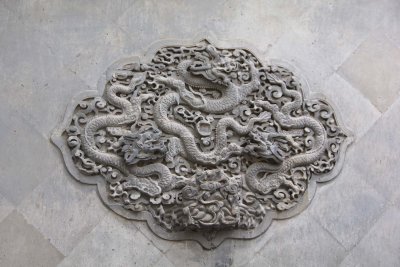
As I left the imperial Summer Palace, I admired this amazing relief sculpture of a dragon on a nearby wall. |











